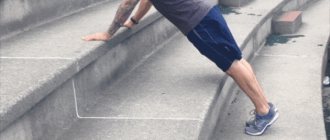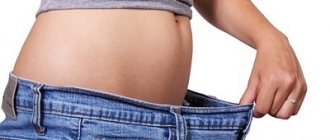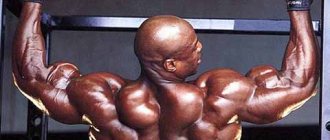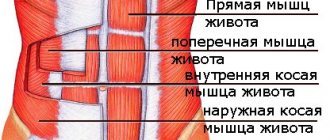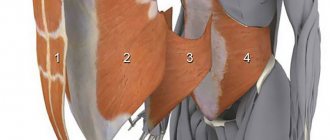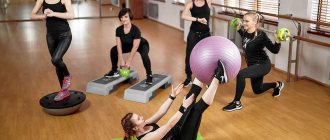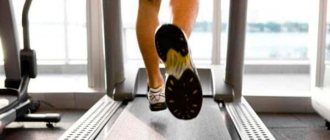Benefits of exercise and disadvantages
The main benefit of the wall chair exercise is the isometric load, which distinguishes it from dynamic exercises. Thanks to this, the chair against the wall should not be considered as a replacement for basic exercises, since during the chair exercise the muscles do not contract, but at the same time they are powerfully tense and acidified.
The main advantages of the “chair” stand against the wall:
- Strengthening the leg muscles.
- Improved posture and strengthened back muscles.
- Working out the core muscles in a static mode.
- The ability to train muscles even when strength training is completely contraindicated.
- Increased endurance.
- Improving blood circulation in the pelvic organs.
Disadvantages of the exercise:
- The disadvantages of a chair against the wall are related to the characteristics of the exercise. In the absence of muscle contraction, you should not count on an increase in the volume of the hips and buttocks (at most, the movement will tone the muscles).
- Also, a disadvantage can be considered rapid adaptation and the inability to progress after a certain point. This mainly applies to cases where an athlete can easily perform sets of 60 seconds and not achieve muscle failure. This means that over time, the effect of the chair will not be enough to train your legs.
Workout for losing belly fat
Fat in the abdominal area accumulates due to an unbalanced diet, excessive consumption of fast carbohydrates and low physical activity. Also, the abdomen can increase due to hormonal disorders and after childbirth in women. Without a proper balanced diet, it is impossible to get rid of belly fat. But regular exercise will help you achieve your goal and lose belly fat much faster.
HOW TO START EATING CORRECTLY
We offer you a selection of exercises for losing belly fat, which are aimed at:
- General fat burning through functional exercises and high heart rate throughout the session
- Tone the abdominal muscles by performing exercises with an emphasis on the muscle corset
This workout for losing belly fat includes simple, low-impact exercises to tone the muscles of the whole body, but especially the muscular corset. There will be no planks or crunches here - all exercises are vertical, i.e. pass in a standing position. However, even without these classic exercises, you will perfectly pump up your abs, tighten your stomach, burn calories and reduce your body size.
Who is this collection of exercises suitable for?
- For those who want to lose weight and tighten their stomach (and their whole body)
- For those who are just starting to train, since the exercises are very accessible even for beginners
- For those looking for an ab workout without crunches and planks
- For those looking for simple exercise for the morning or evening
- For those looking for a low-impact, low-impact cardio workout
If you perform the suggested exercises at a fast pace, then this workout will be an excellent option for low-impact cardio without jumping. You'll raise your heart rate, burn calories and rev up your metabolism. The faster the pace of exercise, the more effective the workout will be in terms of fat burning.
If you first want to tone your muscles, then perform the exercises slowly and concentrated. Speed in this case is not critical.
What are the benefits of this workout:
- Strengthen your abs and tighten your stomach through exercises that focus on this area of the body.
- Burn calories and boost your metabolism as you perform a variety of multi-joint exercises and keep your heart rate high throughout your workout.
- Tones the muscles of the entire body (including the thighs and buttocks!) through exercises that involve several muscle groups in the upper and lower body.
- Improves posture and strengthens the deep muscles that support the spine.
- Improved endurance and overall fitness.
Of course, losing weight locally is very difficult. You cannot force the body to burn fat in a specific area of the body. But if you eat right, do fat-loss workouts, strengthen your abdominal muscles to tone them, and improve your posture, all of this together will help you improve your figure and get rid of belly fat.
How to do this workout:
- Before training, it is advisable to warm up to prepare the body for the load.
- You can perform this workout for losing belly fat either by timer or by number of repetitions. The number of repetitions is indicated in the description of the exercises, but you can always change the number to suit your capabilities. It is convenient to train by counting repetitions if you do not have a timer at hand. In this case, try not to take long breaks between exercises; on average, the rest should be 10-15 seconds.
- However, to lose belly fat, it is more effective to time your workout, trying to do more repetitions in less time. This approach will allow you to maintain a high pace and burn more calories. For example, you can choose the following exercise intervals: work intensively for 30 seconds / rest for 10 seconds and move on to the next exercise. To set intervals, download applications to your mobile phone, for example, Tabata Timer. You can use a timer on YouTube. Be sure to check out our selection: Top 10 Android apps with timers for training.
- Below are 20 exercises for losing belly fat, which are divided into two rounds of 10 exercises. You can do these rounds on the same day or alternate them on different days as per your preference.
- While doing the exercises, it is very important to tense your abdominal muscles; your stomach should not be relaxed.
- Most of the exercises presented involve the muscles of both the upper and lower body, so this workout is not only for losing weight in the stomach, but for the whole body.
- The faster you perform the exercises and the faster the pace, the more calories you will burn and the more effective your workout will be in terms of fat burning.
- Watch your breathing during training: exhale with effort, inhale with relaxation.
Timer 30 seconds work / 10 seconds rest:
What muscles work
The main muscle targeted is the front of the thighs. It is on her that the main burden falls. Also, when holding a position, the following are used:
- Biceps femoris.
- Buttocks.
- Muscles of the lower back.
- Calf.
- Rectus abdominis muscle.
- Adductor muscles of the thigh.
If the movement is performed with arms extended forward, the front heads of the deltas are additionally loaded in isometric mode.
How to do the wall chair exercise correctly
As with any isometric movement, when performing the Chinese chair, it is important to take the correct position and maintain it throughout the entire approach.
Technique:
- Go to the wall and press your back against it. Take half a step forward, feet shoulder-width apart, arms straight forward or hanging freely along the body. This is the starting position.
- Slide down the wall while bending your knees. Lower yourself until a right angle is formed between your thigh and shin (also a right angle between your thighs and body).
- Hold the body position for the maximum amount of time, then return to the starting position.
A few more benefits of exercise
- Firstly, the “Chair” exercises are extremely unpretentious
. You may need a wall at first, but this is not necessary, because beginners in the eastern gymnastics “Wushu” perform the “mabu” stance in their first lesson, which is in many ways similar to the “Chair”, and without any wall. Then this “delayed squat” can be done in any small interior. - Secondly, you yourself can determine the number of visits and duration of “sitting”
. The main thing is to feel the “warm-up” of the tendons. You will really feel hot. - Thirdly, you can repeat this exercise every day
, even twice a day, and only twice a week. The more often, the stronger you will feel already in the second week of mastering the “Chair”. - The knee joints are minimally exposed to injury
, which occurs during regular squats, and even with excess weight or. Although there is still a load on the knees. That’s why you need to monitor the correct technique for performing the “Chair” in order to distribute most of the load between the pelvis, feet, back and hips. - The “chair” relieves intervertebral hernia
, like all exercises that involve the back muscles
Do you know any other interesting branches from the classic “High Chair”? No matter how you perform it, the static orientation of this exercise will soon manifest itself in a noticeably increased strength of your legs, with their visual improvement.
There are many exercises that can help pump up your legs and buttocks, making them slimmer and more toned. Some people prefer squats, others prefer cardio, but many people forget about the existence of static exercises. These include the so-called high chair.
Complication Variations
There are a large number of variations of execution that can be used to increase the benefits of a wall chair and increase the load on the muscles. Use different variations depending on the sports equipment you have. You can also alternate different options from workout to workout to get a varied load.
Exercise chair with elastic band
Holding a wall position with a resistance band is one of the best options for women. It allows you to load the middle and small gluteals, which not only forms the ideal roundness of the butt, but also improves the relief.
Technique:
- Place the loop on your legs, just above the knee. Place your feet shoulder-width apart and lean against the wall.
- Lower yourself down until your thigh is parallel to the floor.
- Hold the position until the end of the approach.
It is important to take into account that in this variation the tourniquet will bring the legs together, so you need to maintain the position and not turn your knees inward.
Exercise chair with fitball
The exercise ball option adds unstable support to holding the position, which allows you to recruit some additional muscles. This mainly concerns the deep layers and core muscles. Another advantage of this technique is the ability to safely go down to the maximum depth without overloading the knee and hip joints.
Technique:
- Place the ball against the wall and press it with your back. Place the exercise ball at the level of your lower back and middle back. Feet shoulder-width apart, gaze directed forward.
- Lower yourself down, rolling the ball along the wall until your thighs are parallel to the floor.
- Hold the position until the end of the approach.
Exercise chair without wall
There are two versions of the high chair without a wall:
- With hands holding the support (light) and without support.
- The second option is considered the most difficult among all variations. Maintaining a position with a right angle at the knee requires a lot of muscle strength not only in the legs, but also in the core muscles. This also requires training in balance.
Technique (simplified version):
- Grasp any support with one or two hands.
- Sit as low as possible.
- Hold the position for as long as possible with your back straight.
Chair with raised leg
The second most difficult execution option, as well as the most difficult technique for the leg muscles. When holding the body on one leg, the muscles are used to the maximum, both for the supporting leg and for the other leg.
Technique:
- Rest your back against the wall and take half a step forward. Feet shoulder-width apart, shoulder blades and rear delts pressed against the wall.
- Lower yourself down until your knees are bent at right angles.
- Lift one leg forward and keep it parallel to the floor.
Chair against the wall with weights in hands
It is very important to do this chair technique correctly with dumbbells or kettlebells. Holding the weight with outstretched arms is considered a mistake. This option will only lead to a greater burden falling on your shoulders. The main purpose of weights is to increase the load on the legs, so it is optimal to keep the weight pressed to the body with the arms bent at the elbows.
Technique:
- Take dumbbells in your hands. Press yourself against the wall and take the starting position.
- Lower yourself down and bend your arms, bringing them close to your body.
- Hold the position for as long as possible.
A chair with a medicine ball sandwiched between the legs
This option is designed for additional load on the adductor muscles of the thigh (inner part).
Technique:
- Take a position against the wall, holding the ball with your hands.
- Lower yourself down and place the medicine ball between your thighs at knee level.
- Try to squeeze the ball with your feet throughout the approach.
How to give your muscles a stronger workout
If you can confidently sit in a rack for 3 minutes, you should try to train further, choosing more complex techniques so that your muscles develop and your strength and endurance grow. Progress to more challenging workouts gradually, again starting with small intervals.
With dumbbells
An option for those who also want to pump up their arms, and at the same time strengthen the training for their legs. Take dumbbells and exercise: you can hold them in your arms extended forward, upward or to the sides, and later you can do swings, bends, and whatever you want, while you sit against a wall or without it. The main thing is to control the angle of your legs and keep your back straight.
Without a wall
While you are leaning against the support, your back is used much less. Try squats just like that, and you will notice how the load increases. Try to sit without support for as long as possible, keeping your arms behind your head or extended forward. The exercise actively develops a sense of balance and coordination.
On one leg
The exercise is somewhat similar to the “pistol” exercise that everyone has been accustomed to since school. Squat with a straight back, one leg straightened forward, the other at an angle of 90 degrees, as before. Only instead of the squats themselves, you need to lock in the position. Then change legs. The load increases even more than 2 times, since you also need to keep the extended leg straight, which gives a varied load on the muscles in one exercise.
Recommendations
In isometric movements, progress is tracked by the time the position is held. Therefore, it is necessary to understand how long to do each approach so that the muscles receive a sufficient amount of load:
- For beginners – 30 seconds in 3 sets.
- For advanced people – from 30 to 60 seconds in 4-5 approaches.
- When performing 5 sets of a minute, it is worth introducing complicating techniques (stand on one leg, without support, etc.).
It is important to understand that performing the movement for more than a minute will only lead to increased acidification and muscle destruction. Also, a chair against the wall is not suitable for weight loss , as it does not lead to a lot of energy expenditure. There are no variations between performance for men and women; this is a universal movement that is equally suitable for all athletes, regardless of conditions.
How to vary the exercise
Over time, as your muscles get stronger, or even now (if you have a decent level of physical fitness), you may get tired of doing an exercise called a chair, just standing against the wall. We suggest preparing for this day in advance and learning how to diversify the static pose and enhance the effect of freezing in it.
- A chair without support. Holding your weight against a wall is a real challenge for new fitness enthusiasts. But if you have already learned to sit in a classic chair for a long time, and your body requires changes in your sports diet, we offer another method. Stand straight, place your feet shoulder-width apart. Now sit down slowly. Make sure your knees don't go past your toes. Sit in this position for as long as possible.
- For everyone who wants to work out their inner thighs as effectively as possible, we recommend doing the Chair with a fitball pressed between your knees for weight loss. In this case, you can choose two options for the development of the scenario - sit still or hold the pose and simultaneously squeeze the equipment with your legs. If you don’t have a fitball, then a regular ball for sports games will do.
- Another variation of the Chair without support. This version of the exercise is often performed during the warm-up process at dances (called plie). You need to stand up straight, straighten your back and place your feet shoulder-width apart. Now slowly rise on your toes and squat so that your knees look to the sides, tuck your tailbone. Hold the pose for as long as possible. This chair “kills” not only the muscles of the legs and buttocks, but also the calves. It also allows you to get rid of the rolls above the knees, which for many women are another bummer. By the way, standing on your toes allows you to improve your body coordination.
This exercise has several options. In addition to the proposed method, you can sit in the Chair and move your pelvis back.
Challenge for 30 days
Doing the wall chair for 30 days as part of a monthly challenge is a good motivation for rapid progression. But you should understand that holding a position for a long time does not give maximum results. This is just a race against time, after which it is recommended to return to the standard training regimen.
Time table by day, calculated for one approach with maximum duration (in seconds).
| Day | 1 | 2 | 3 | 4 | 5 | 6 | 7 | 8 | 9 | 10 | 11 | 12 | 13 | 14 | 15 | 16 | 17 | 18 | 19 | 20 | 21 | 22 | 23 | 24 | 25 | 26 | 27 | 28 | 29 | 30 |
| Seconds | 10 | 20 | 30 | 35 | 40 | 45 | 50 | 55 | 60 | 65 | 70 | 75 | 80 | 85 | 90 | 95 | 100 | 105 | 110 | 115 | 120 | 125 | 130 | 135 | 140 | 145 | 150 | 160 | 170 | 180 |
results
The maximum benefit of the chair exercise will be seen in beginners or after a long break in training. Gradually the body will adapt to the load and you will have to complicate the execution by adding various techniques. The most noticeable effect is “muscle awakening,” that is, toning the muscles. This can visually increase the volume of the hips and buttocks. The fat-burning potential of the exercise is minimal, so it should not be considered as a way to eliminate fat.
What are the benefits of an imaginary chair?
Every person tries to choose a comfortable and at the same time effective exercise for training. The chair is well suited for both of these parameters; it helps not only strengthen muscles, but also tendons and ligaments. You can perform training in any convenient place where there is a wall. The benefits of the chair exercise are as follows:
- You can independently adjust the number of repetitions. The muscles should begin to “burn”, this signals that they have received the necessary load.
- The chair is an extremely “unpretentious” movement. No additional equipment or special training equipment is needed. At first you will only need a wall for support, but as your strength increases you will be able to perform the exercise without it. Minimum required space – maximum result.
- You can train using this method every day; some people even do a chair in the morning and evening. Muscles recover quickly after static load
- You will minimize the likelihood of injury during training, the knee joints will remain intact and unharmed (which cannot be said about squats with a barbell). Physical activity should not only be effective, but also safe.
- The exercise is a good prevention of spinal hernia, like all back workouts.
Just like other static exercises, the “chair” against the wall strengthens the muscles well, but does not put much strain on the joints and ligaments, making it safe even for amateurs. Its regular implementation will give the following results:
- Muscles, ligaments, tendons and joints will become more elastic and stronger.
- The back muscles, strengthened as a result of training, will support the spine well, which is an ideal prevention of intervertebral hernia and osteochondrosis.
- Extra calories received at lunch or dinner will be burned quickly and easily.
- The internal organs will also benefit: the abdominal muscles, tensing during the exercise, will massage them, increasing blood circulation in the abdominal cavity. This will have a beneficial effect on the functionality of all digestive organs, and especially on the functioning of the intestines.
The wall chair exercise is a great workout for almost the entire body. It develops strength, endurance and flexibility. Everyone can adapt it to their capabilities, choosing the type of training that they like best.
There are practically no contraindications for the “chair”.
If you have some experience in fitness, you can perform the exercise a little longer, use it more often, use dumbbells or other equipment.
Whatever your goal - to improve the shape of your buttocks, to tone up your abs, or simply to cover up traces of extra calories after eating chocolate - the “chair” will certainly be useful to you. So try it in a variety of variations. You will not regret.
